[Newsbits] 24-30.01.2024: INSAT-3DS, European Ports Alliance & more


The ASI’s Gyanvapi Mosque Survey Report, released in January 2024, has stirred significant interest, particularly in India. The report suggests that Varanasi’s Gyanvapi mosque is built on the ruins of a Hindu temple, as indicated by findings like Hindu deity sculptures, architectural elements, and various inscriptions in scripts such as Devanagari, Telugu, and Kannada. This conclusion has reignited debates about the historical origins of the site and its future. The mosque’s history, dating back over 800 years, includes periods of destruction and reconstruction, notably during Aurangzeb’s reign and under Maharaja Man Singh of Amer. The report presents both a historical clarification of the site’s past and potential challenges due to religious sensitivities and legal implications.
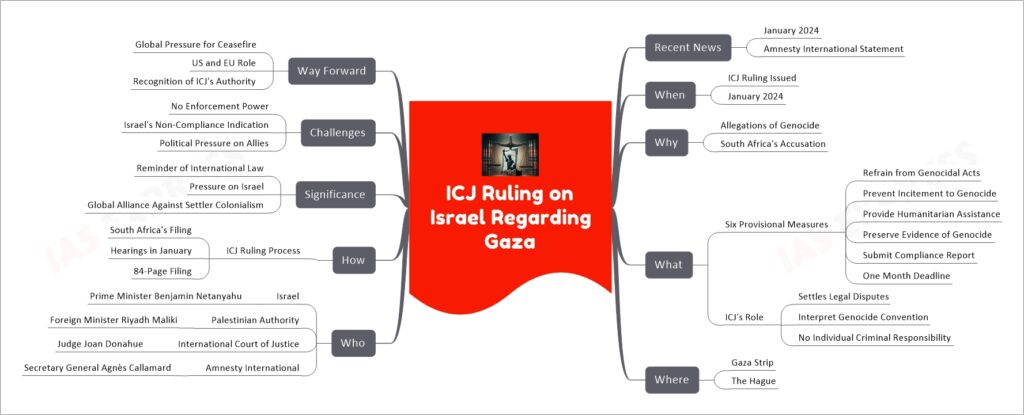
In January 2024, the International Court of Justice (ICJ) issued a ruling regarding Israel’s actions in the Gaza Strip, in response to South Africa’s accusation of genocide. The ruling ordered Israel to take several provisional measures, including refraining from genocidal acts, preventing the incitement to genocide, providing humanitarian assistance, preserving evidence of genocide, and submitting a compliance report within a month. Although the ruling is significant in emphasizing the role of international law and applying pressure on Israel, it faces challenges due to the ICJ’s lack of enforcement power and Israel’s indications of non-compliance. The ruling has implications for global politics, particularly concerning the roles of the US and EU, and highlights the need for global efforts towards a ceasefire and the recognition of the ICJ’s authority.

The University Grants Commission (UGC) of India proposed draft guidelines in December 2023 concerning the de-reservation of teaching positions in higher education institutes (HEIs). These guidelines aim to open reserved vacancies (for SC, ST, and OBC candidates) to the general category under certain conditions, particularly in cases where no suitable reserved category candidates are available. The guidelines suggest a general ban on de-reservation for direct recruitment, except in rare and exceptional cases for Group A posts. For de-reservation, a detailed proposal process was outlined, with different approval requirements for various group posts. The guidelines also include provisions for de-reservation in promotions. These guidelines faced significant backlash and criticism for potentially undermining reservation policies. However, the Ministry of Education clarified that there was no change in the existing reservation policy and reaffirmed its commitment to maintaining reserved positions.

The Indian Air Force (IAF) is set to conduct three major exercises in 2024, aiming to showcase jointness and integration in modern warfare. These exercises include Vayu Shakti, a major firepower demonstration in Jaisalmer; Gagan Shakti, a pan-India level activation involving various offensive and defensive missions; and Tarang Shakti, a multinational exercise in Jodhpur with participation from foreign air forces. These exercises, led by key figures such as Air Chief Marshal VR Chaudhari and Chief of Defence Staff Gen Anil Chauhan, emphasize the IAF’s commitment to enhancing integration and showcasing its capabilities on a global stage.
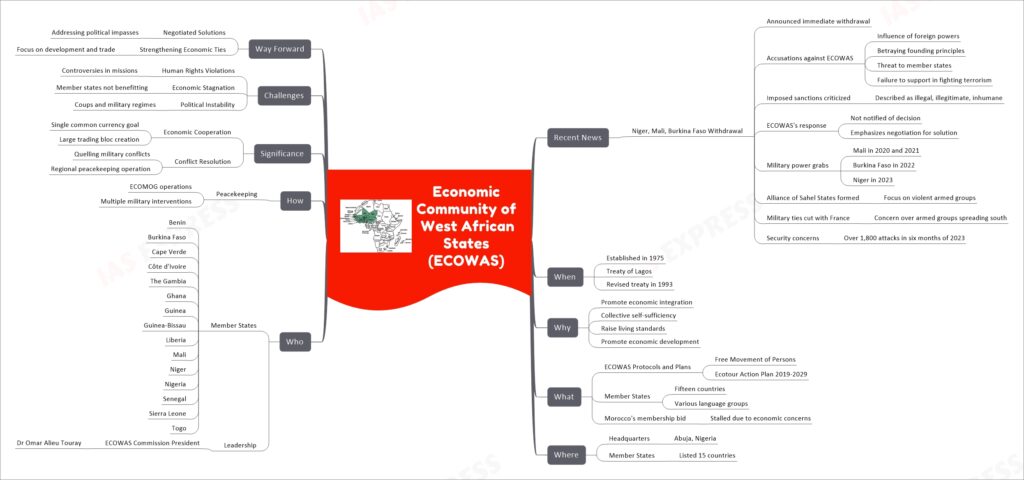
The Economic Community of West African States (ECOWAS) is a regional political and economic union of fifteen countries in West Africa, established in 1975 to promote economic integration, collective self-sufficiency, and raise living standards. Recently, Niger, Mali, and Burkina Faso announced their immediate withdrawal from ECOWAS, citing its failure to support their fight against terrorism and accusing it of betraying its founding principles. ECOWAS responded by emphasizing the need for negotiated solutions and maintaining its commitment to finding a resolution. The organization has faced challenges such as human rights violations during peacekeeping missions, economic stagnation, and political instability marked by military coups. Despite these challenges, ECOWAS continues to strive towards its goals of economic cooperation, conflict resolution, and creating a single large trading bloc, including efforts towards a single common currency. The organization’s future focus includes addressing political impasses and strengthening economic ties among member states.
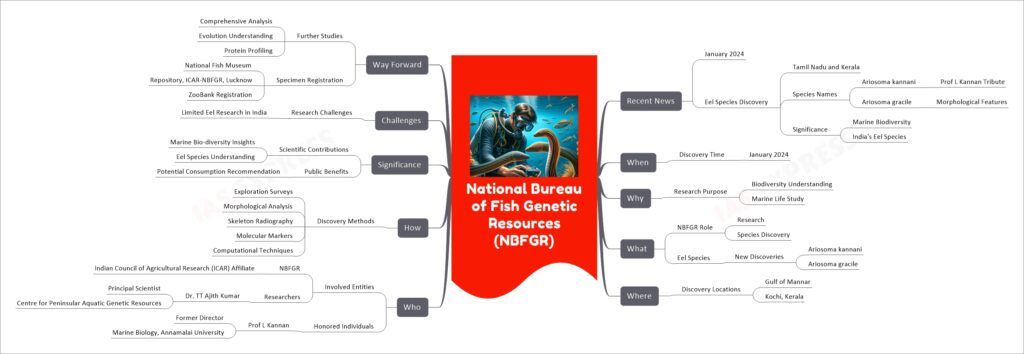
The National Bureau of Fish Genetic Resources (NBFGR) in India, a unit of the Indian Council of Agricultural Research (ICAR), recently discovered two new eel species along the coasts of Tamil Nadu and Kerala. These species, named ‘Ariosoma kannani’ and ‘Ariosoma gracile’, contribute to the understanding of marine biodiversity and eel species in India. The discovery, made in January 2024, was a result of extensive research and analysis by NBFGR researchers. This discovery is significant as it enhances the knowledge of marine life and contributes to potential future studies and public benefits.
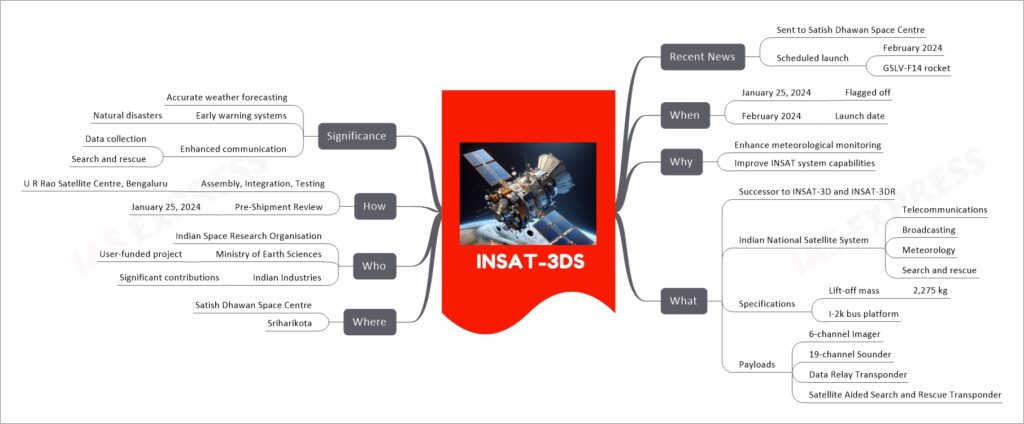
The INSAT-3DS is an advanced meteorological satellite developed by the Indian Space Research Organisation (ISRO). It is scheduled for launch in February 2024 aboard the GSLV-F14 rocket. As a successor to the INSAT-3D and INSAT-3DR satellites, INSAT-3DS aims to enhance meteorological monitoring capabilities in India. The satellite, with a lift-off mass of 2,275 kg, includes state-of-the-art payloads such as a 6-channel Imager, a 19-channel Sounder, a Data Relay Transponder (DRT), and a Satellite Aided Search and Rescue (SAS&R) transponder. These instruments will improve weather forecasting and provide early warnings for natural disasters, thereby bolstering disaster management in India. The development and launch of INSAT-3DS mark a significant step forward in India’s meteorological observation capabilities.
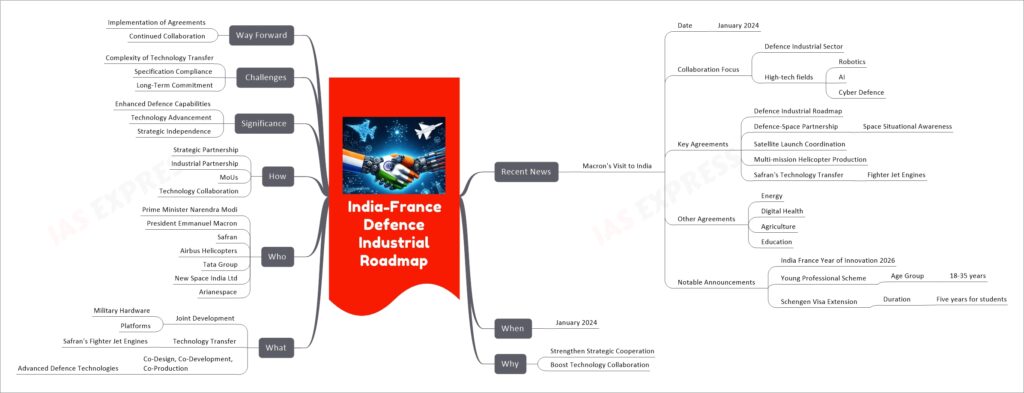
The India-France Defence Industrial Roadmap, reinforced during French President Emmanuel Macron’s visit to India in January 2024, focuses on enhancing collaborative efforts in the defence-industrial sector, particularly in high-tech fields like robotics, AI, and cyber defence. This roadmap includes joint development and production of vital military hardware and platforms, with a significant push towards technology transfer, notably from Safran for fighter jet engines. Other key aspects of this partnership include a defence-space partnership for space situational awareness, satellite launch coordination, and production of a multi-mission helicopter in India. Beyond defence, the agreement spans energy, digital health, agriculture, and education sectors, marking a comprehensive approach to the strategic partnership between the two nations.

The Uttarakhand Uniform Civil Code (UCC) Bill is a legislative initiative in Uttarakhand, led by Chief Minister Pushkar Singh Dhami, aiming to implement a uniform set of personal laws for all citizens, irrespective of their religion. The bill covers various personal matters like marriage, divorce, inheritance, and adoption, aiming to ensure gender equality and social harmony. The draft bill, prepared by a committee led by Justice Ranjana Prakash Desai, is set to be submitted on February 2, 2024, with the Uttarakhand Assembly session scheduled from February 5 to 8, 2024. This move is closely watched by other states and the union government, as it could set a precedent for the implementation of UCC in other regions.
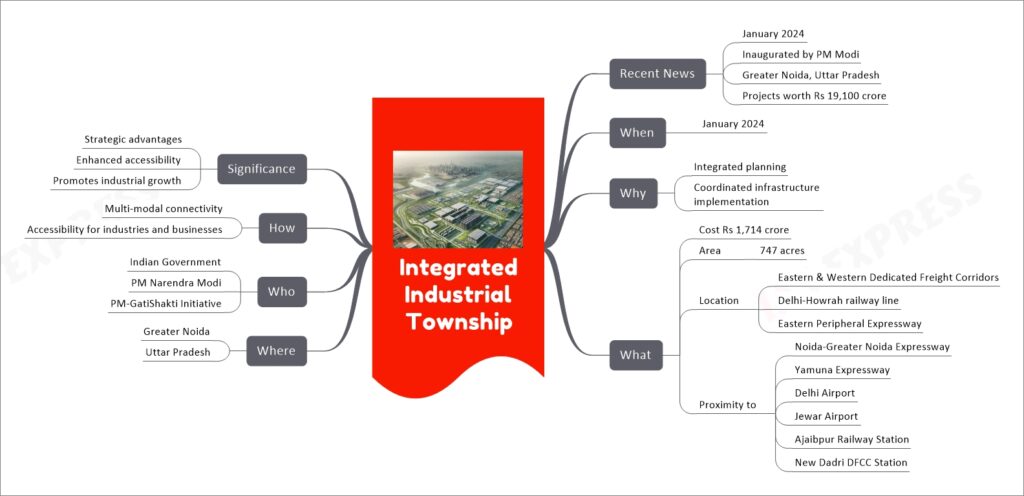
The Integrated Industrial Township in Greater Noida, inaugurated in January 2024 by Prime Minister Narendra Modi, is a landmark development in India’s urban and industrial infrastructure. Costing Rs 1,714 crore and covering 747 acres, it’s strategically placed at key infrastructural junctions, including the Eastern and Western Dedicated Freight Corridors and the Delhi-Howrah railway line. This township, developed under the PM-GatiShakti initiative, aims to provide enhanced multi-modal connectivity, fostering accessible and efficient industrial growth.
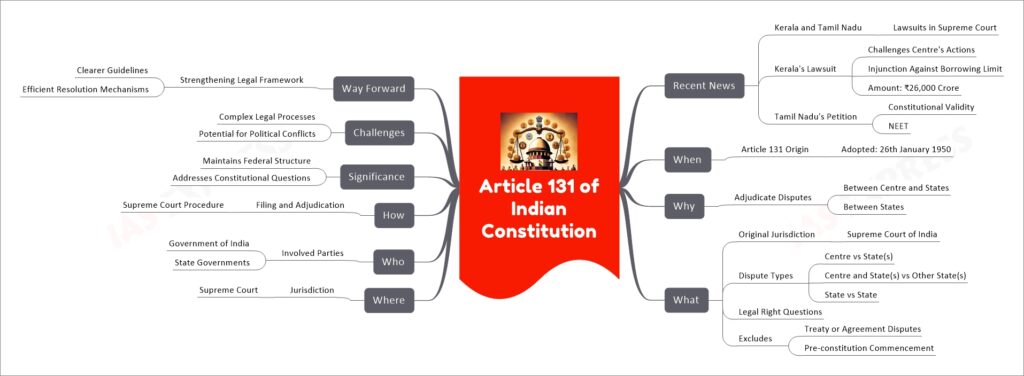
Article 131 of the Indian Constitution is a legal provision that gives the Supreme Court of India the original jurisdiction to adjudicate disputes between the central government and one or more states, between different states, and between the central government and a group of states. This article has been a pivotal tool for addressing conflicts and maintaining the federal structure of India. It was recently invoked by the state governments of Kerala and Tamil Nadu to file lawsuits against the central government, highlighting its ongoing relevance and utility in resolving key constitutional and legal disputes in the country.
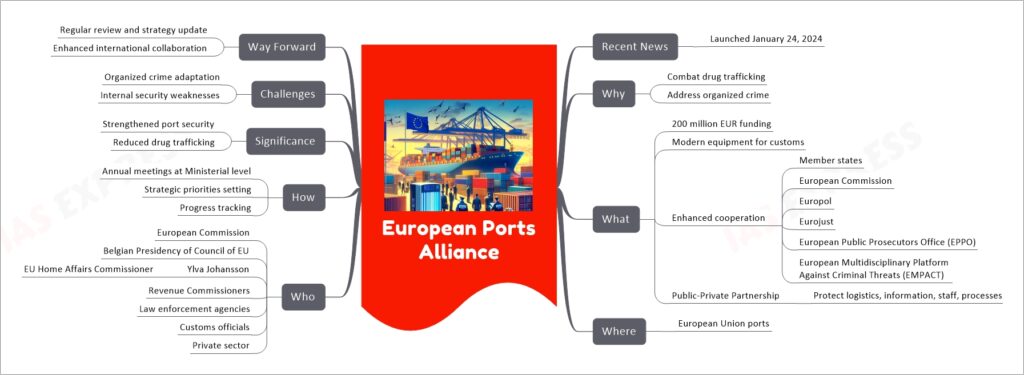
The European Ports Alliance, launched on January 24, 2024, by the European Commission in collaboration with the Belgian Presidency of the Council of the EU, is a significant initiative aimed at combating drug trafficking and organized crime in European ports. This response is prompted by the alarming increase in drug seizures in European ports. The Alliance involves an investment of 200 million EUR for state-of-the-art equipment to assist customs officials and fosters cooperation between various European entities. It also includes a Public-Private Partnership to safeguard logistics and operations in ports. This strategic move is crucial for enhancing the security of Europe’s logistics hubs and curtailing the activities of criminal groups exploiting port vulnerabilities.
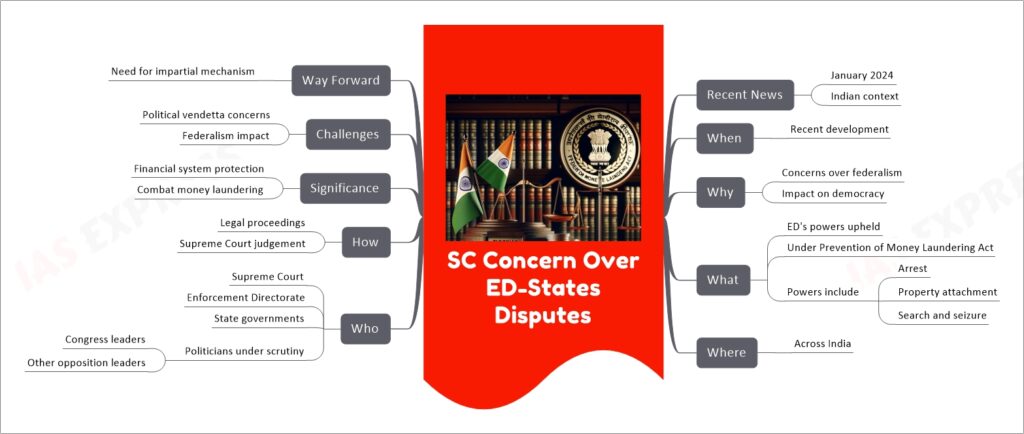
The Supreme Court of India recently raised concerns about the escalating disputes between the Enforcement Directorate (ED) and various state governments. These disputes stem from the ED’s enhanced powers under the Prevention of Money Laundering Act, including arrest, property attachment, and search and seizure, which have been upheld by the Supreme Court. This situation poses significant implications for federalism and democracy in India, particularly with accusations of these powers being used for political vendetta. The resolution of these disputes is critical for maintaining a balance between combating financial crimes and protecting democratic values and federal structures.
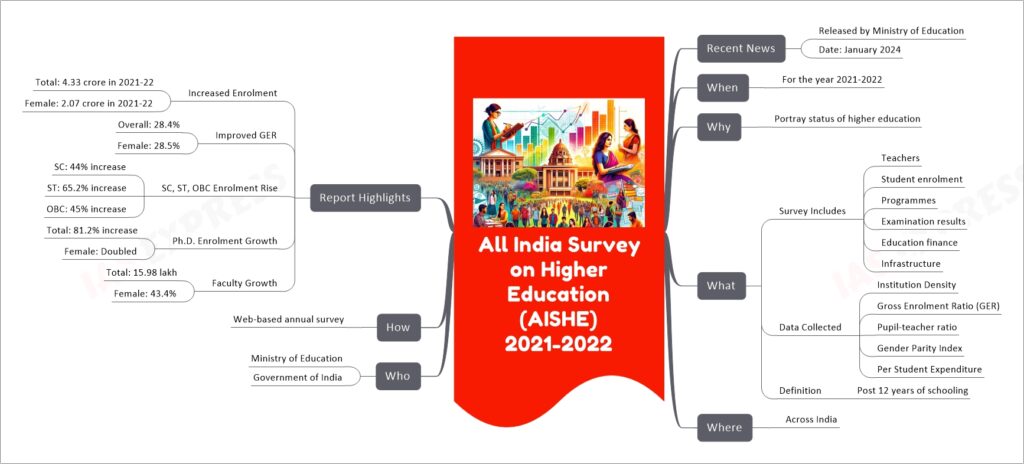
The AISHE 2021-2022 report, released by India’s Ministry of Education, provides a detailed analysis of the higher education sector in the country. It covers data on student enrolment, faculty, academic programs, and educational infrastructure. Key highlights include an increase in overall student enrolment to 4.33 crore, with significant growth in the enrolment of female, SC, ST, and OBC students. The report also notes an improvement in the Gross Enrolment Ratio and an increase in female faculty members in higher education institutions.

The 2024 Padma Awards are a prestigious set of Indian civilian honors awarded annually in three categories: Padma Vibhushan, Padma Bhushan, and Padma Shri. These awards recognize achievements in various fields such as art, social work, public affairs, science, trade, and more. This year, 132 awards were announced, including notable awardees across diverse fields and regions, both from India and internationally. The awards are a significant acknowledgment of contributions to society and national development.
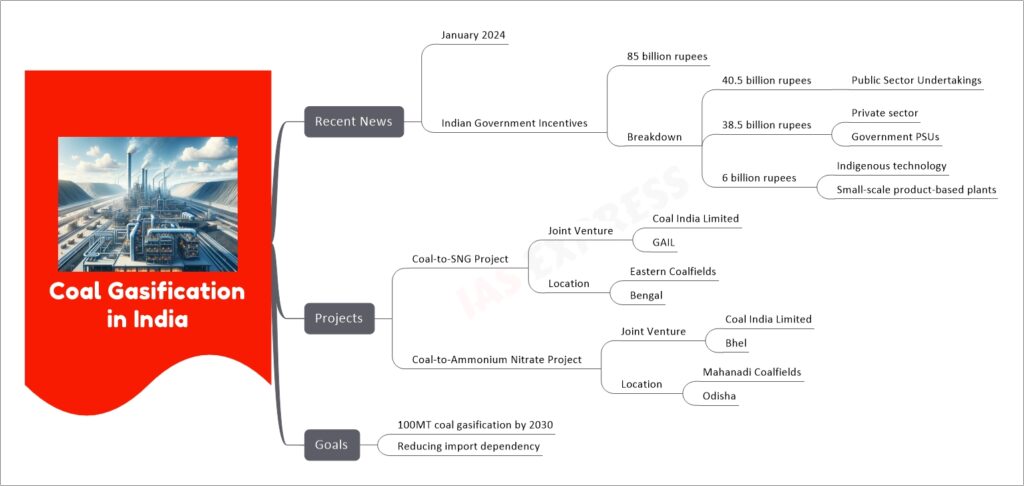
In January 2024, the Indian government announced significant financial incentives totaling 85 billion rupees to support coal gasification projects. This initiative includes two major projects: a coal-to-SNG project in Bengal, and a coal-to-ammonium nitrate project in Odisha, both involving partnerships with major corporations like GAIL and Bhel. The goal is to achieve 100MT of coal gasification by 2030, aiming to reduce India’s dependency on imports.
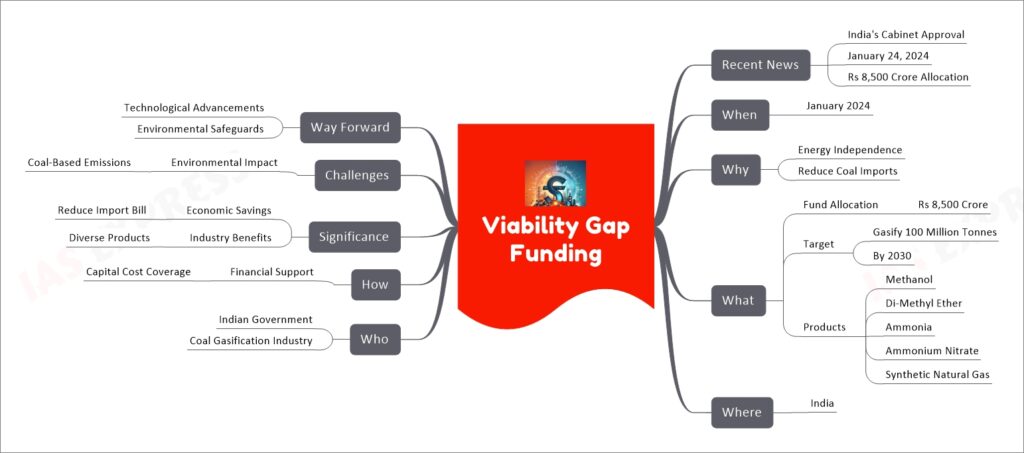
The Indian government recently approved Viability Gap Funding (VGF) of Rs 8,500 crore for coal gasification, aiming to gasify 100 million tonnes of coal by 2030. This strategic move, announced on January 24, 2024, is part of India’s effort to achieve energy independence and reduce its coal import bill. The funding will support the production of various products, such as methanol, Di-Methyl Ether, ammonia, and Synthetic Natural Gas, benefiting multiple industries. While offering economic benefits, the initiative also faces environmental challenges due to coal-based emissions.
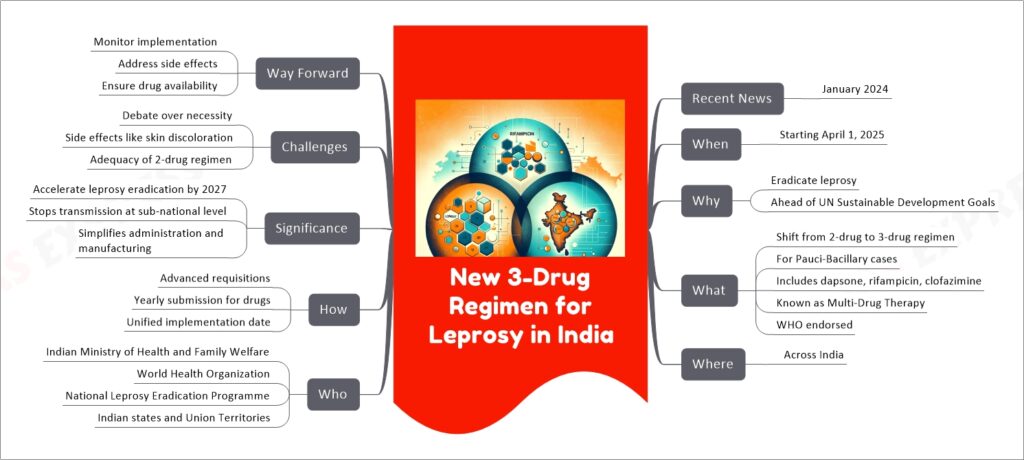
In January 2024, the Indian Ministry of Health and Family Welfare announced the approval of a new 3-drug regimen for the treatment of Pauci-Bacillary (PB) leprosy, set to start on April 1, 2025. This initiative replaces the existing 2-drug regimen and includes dapsone, rifampicin, and clofazimine. Endorsed by the World Health Organization (WHO), it is part of India’s commitment to eradicate leprosy by 2027, aligning with the United Nations’ Sustainable Development Goals. While this transition is expected to accelerate the eradication of leprosy and simplify treatment processes, there are concerns about its necessity and potential side effects, such as skin discoloration.
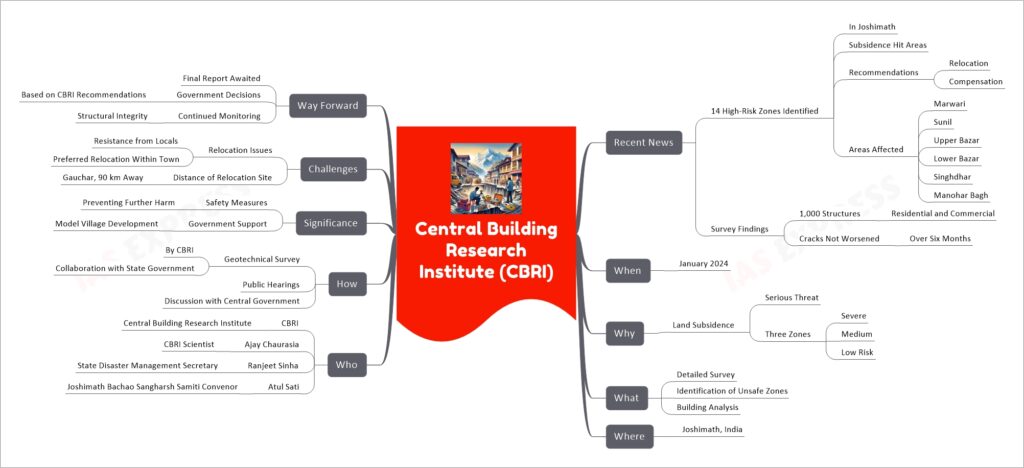
The Central Building Research Institute (CBRI), in January 2024, identified 14 high-risk zones in Joshimath, India, due to severe land subsidence. This situation has rendered approximately 1,000 residential and commercial structures unsafe. CBRI’s detailed survey revealed three risk zones (severe, medium, and low) and advised the relocation or compensation of affected residents. The regions most impacted include Marwari, Sunil, Upper Bazar, Lower Bazar, Singhdhar, and Manohar Bagh. Despite this recommendation, there is resistance from locals who prefer relocation within the town itself, as opposed to distant areas like Gauchar, which is 90 km away. The government, along with CBRI, is working to find a feasible solution, considering the safety and socio-economic aspects of the affected population.
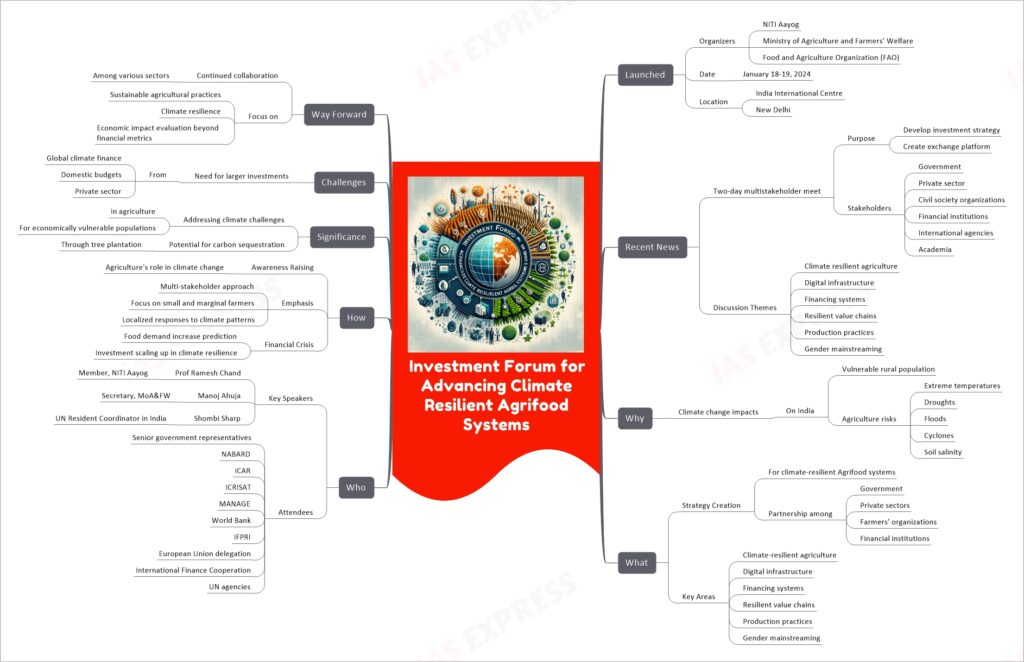
The Investment Forum for Advancing Climate Resilient Agrifood Systems in India, launched by NITI Aayog, the Ministry of Agriculture and Farmers’ Welfare, and the Food and Agriculture Organization (FAO), aims to develop strategies for enhancing climate-resilient agrifood systems in India. This initiative, inaugurated in January 2024, focuses on creating an investment and partnership strategy by involving various stakeholders from the government, private sectors, farmers’ organizations, and financial institutions. Discussions at the forum centered around climate-resilient agriculture, digital infrastructure, financing systems, value chains, production practices, and gender mainstreaming in the context of climate resilience. The forum highlighted the significant impact of climate change on India, especially on its rural population dependent on climate-sensitive agriculture, emphasizing the need for larger investments from various sources to address these challenges. Key speakers at the event stressed the importance of a multi-stakeholder approach, focusing on small and marginal farmers, and the need for local solutions to climate patterns, as well as raising awareness about agriculture’s role in climate change and the potential for carbon sequestration through tree plantation on farmland. The forum sets a direction for future collaboration among different sectors, focusing on sustainable agricultural practices, climate resilience, and evaluating the economic impact of agricultural activities beyond financial metrics.
